Modern art has had a substantial effect on society in an ever-evolving art world. This genre has redefined traditional art concepts with exceptional perspectives and expressive forms.
To grasp the true nature of modern art, studying the masterpieces that have molded its history is essential. This article will list the top ten modern art pieces that profoundly impacted the art industry and continue to inspire artists worldwide.
The Persistence of Memory
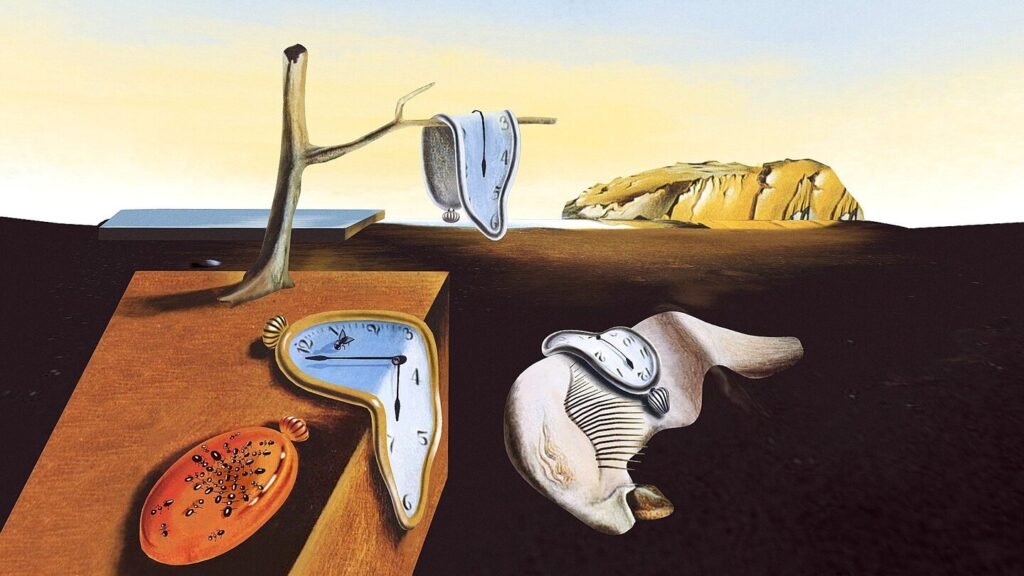
Artist: Salvador Dali
Year: 1931
The Persistence of Memory was painted by Spanish painter Salvador Dali in 1931. It is widely regarded as one of the most distinguished Surrealist works of all time. The painting has garnered immense popularity over the decades and remains one of Spainaird’s most popular paintings.
At the time, Dalí’s theory of “softness” and “hardness” was central to his thinking, and it was exemplified by the image of the soft melting pocket watch featured in this well-known surrealist piece.
This painting by Salvador Dali was acquired by the Museum of Modern Art (MoMA) in 1934 and is now a permanent part of their exhibition. However, it is occasionally loaned to other art museums around the world
The Scream
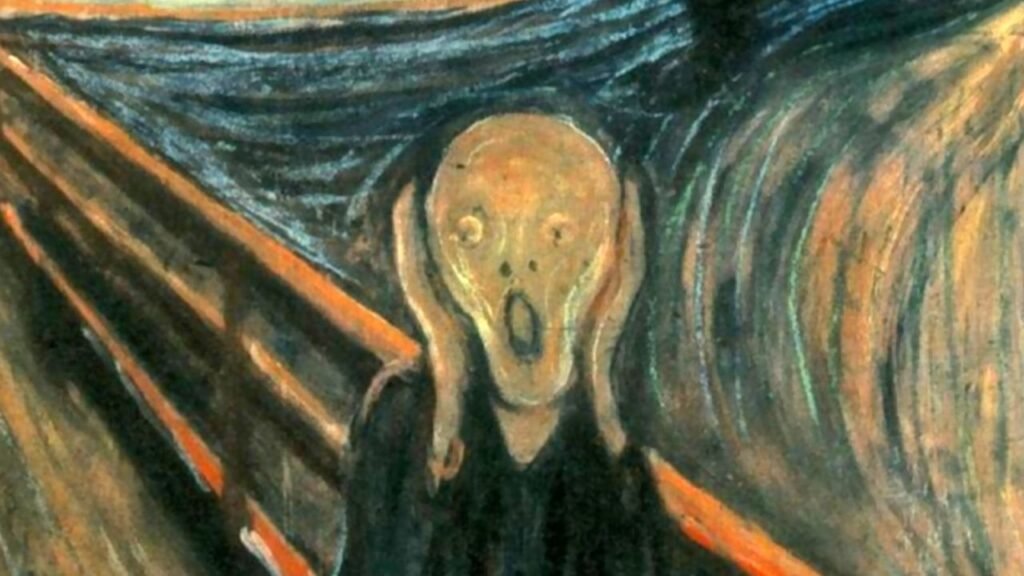
Artist: Edvard Munch
Year: 1893-1910
Edward Munch created four versions of a figure with an agonizing facial expression between 1893 and 1910. The anguished expression depicted in the painting has transformed into a highly recognizable and symbolic representation of human suffering.
The artistic oeuvre of Edvard Munch, particularly his creation The Scream, would prove to be instrumental in shaping the development of the Expressionist style in art.
Two of these versions are exhibited at the National Gallery in Oslo, while another is in the Munch Museum, also in Oslo. The fourth version of The Scream is in the possession of a private collector. In 2012, it was sold for almost $120 million at an auction held by Sotheby’s.
Les Demoiselles d’Avignon

Artist: Pablo Picasso
Year: 1907
The renowned Spanish artist Pablo Picasso created this revolutionary oil painting that departed from traditional painting in 1907. It was a pioneering work of both the Cubist movement and modern art.
Les Demoiselles d’Avignon depicted five nude prostitutes and was initially only shown to his closest friends, artists, and art dealers. All of the figures are portrayed in a disconcerting and confrontational manner, lacking conventional feminine characteristics. The women have angular and disjointed body shapes which makes them appear seem slightly menacing.
The painting, often referred to as one of the greatest Masterpieces of Modern Art, was exhibited for the first time in 1916. It was later acquired by the Museum of Modern Art (MoMA) in New York City in the late 1930s.
Starry Night
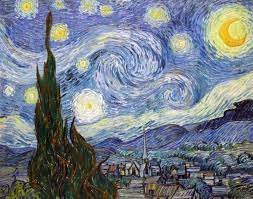
Artist: Vincent Van Gogh
Year: 1889
The painting Starry Night by Van Gogh vividly captures the scenic view from his room at the asylum in Saint-Rémy-de-Provence, where he resided for a year between May 1889 and May 1890. The remarkable swirls in the painting depict the night sky in stunningly chaotic yet mesmerizing waves.
The Starry Night is considered one of the most recognizable paintings in Western art, widely regarded as Van Gogh’s magnum opus, and has been a part of the permanent collection of the Museum of Modern Art in New York City since 1941.
The Card Players

Artist: Grant Wood
Year: 1930
This collection of five paintings by the French post-Impressionist Grant Wood portrays peasants from Provence smoking pipes and playing cards. They are regarded as a pivotal point in his career, as they were completed just before his final years when he produced some of his most highly regarded work.
The paintings are currently exhibited at The Barnes Foundation in Philadelphia, the D’Orsay Museum in Paris, MoMA, the Courtauld Institute of Art in London, and in the personal collection of the royal family of Qatar.
The Dance
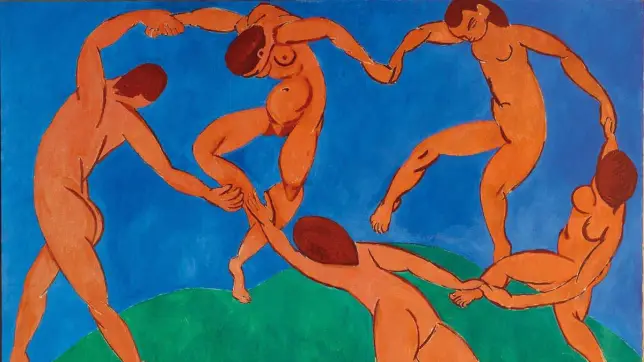
Artist: Henri Matisse
Year: 1909
Henri Matisse created two paintings known as “The Dance.” Both versions contain depictions of five dancing nudes, with the first one serving as a preliminary study for the second.
The initial version has fewer details and less vivid colors. It was painted in 1909 and is exhibited at the MoMA, while the second piece, completed a year later, is owned by The Hermitage Museum in St. Petersburg.
American Gothic
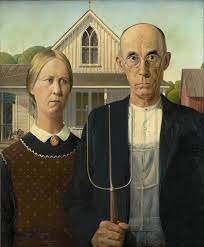
Artist: Grant Wood
Year: 1930
The American Gothic is an iconic image that has been referenced in various media, from The Simpsons to politically motivated statements. The image features a pair standing in front of the Dibble House, an Iowa home designed in the style of North American Carpenter Gothic.
The artist, Grant Wood, utilized his dentist and sister as models for the subjects, representing the type of individuals he envisioned inhabiting the dwelling. Currently, the painting is exhibited at the Art Institute of Chicago.
I and the Village
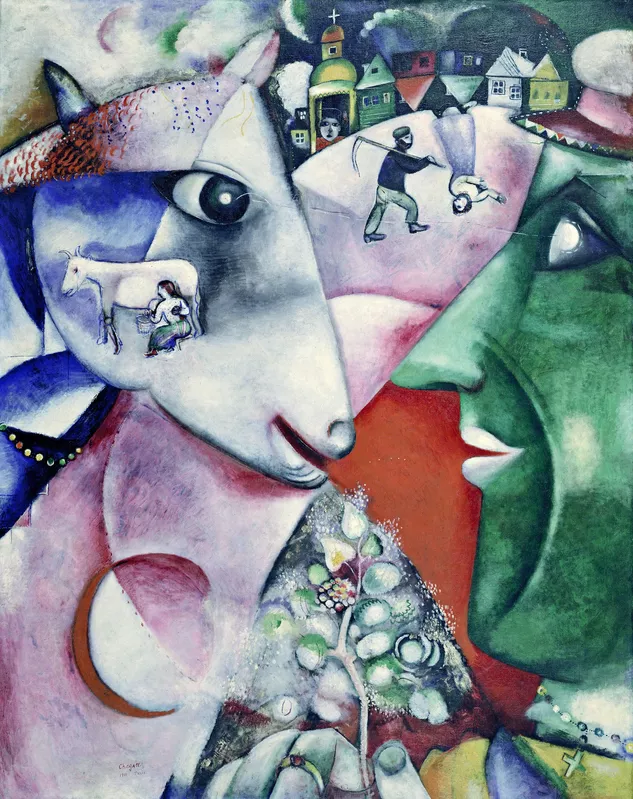
Artist: Marc Chagall
Year: 1911
The “narrative self-portrait” of his childhood by the Belarusian-French artist, Marc Chagall, is depicted in a whimsical Cubist modern art painting.
The artwork combines overlapping images from folklore, religion, Russian landscapes, and his past, which are juxtaposed by color and shape, resulting in a fascinating tapestry.
The Sleeping Gypsy
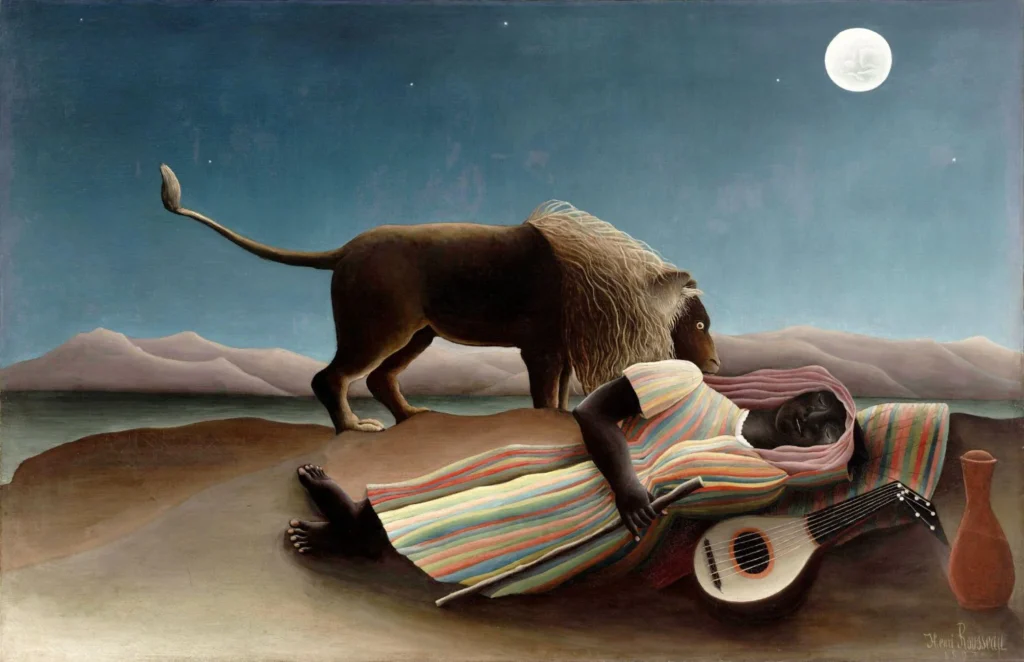
Artist: Henry Rousseau
Year: 1897
Henri Rousseau’s “The Sleeping Gypsy,” an oil painting created in 1897, depicts a lion contemplating a slumbering woman under the light of the moon.
The artwork was first displayed at the 13th Salon des Indépendants and was offered for sale to the mayor of Laval; however, Rousseau was unsuccessful in finding a buyer. The painting was eventually added to a private collection owned by a charcoal merchant in Paris and remained there until art critic Louis Vauxcelles stumbled upon it in 1924.
It was eventually acquired for the Museum of Modern Art by art historian Alfred H. Barr Jr.
Self Portrait with Thorn Necklace and Hummingbird

Artist: Frida Kahlo
Year: 1940
Mexican artist Frida Kahlo’s Self-Portrait with Thorn Necklace and Hummingbird, created in 1940, features a black cat, monkey, and two dragonflies alongside her self-image.
This portrait was painted during a time of emotional turmoil for the artist, as she had just gone through a divorce with Diego Rivera and ended her affair with photographer Nickolas Muray.
Immediately after its completion, Muray purchased this artwork, and presently, it is a coveted possession of the Nickolas Muray Collection at the Harry Ransom Center situated at the University of Texas in Austin.
